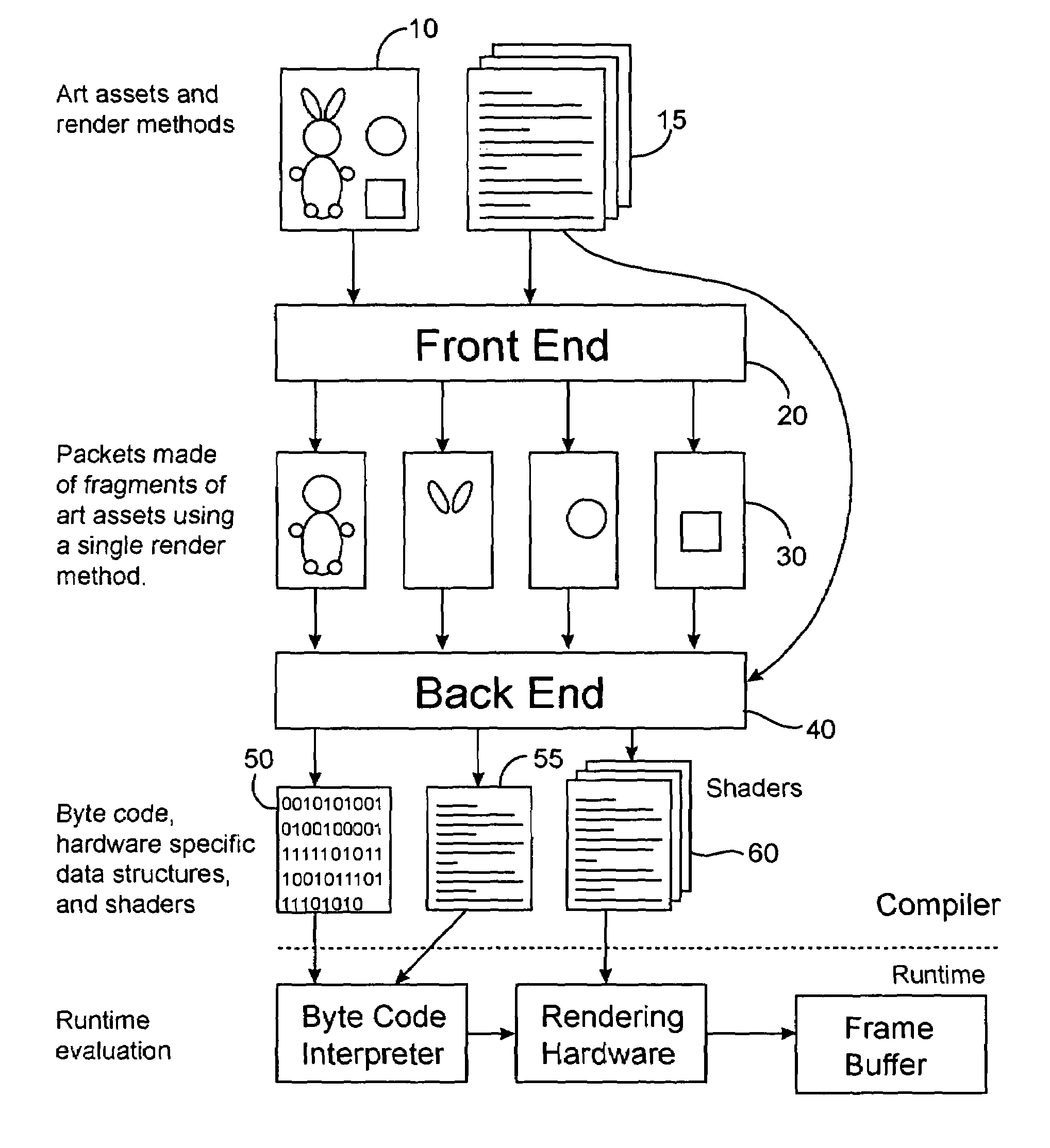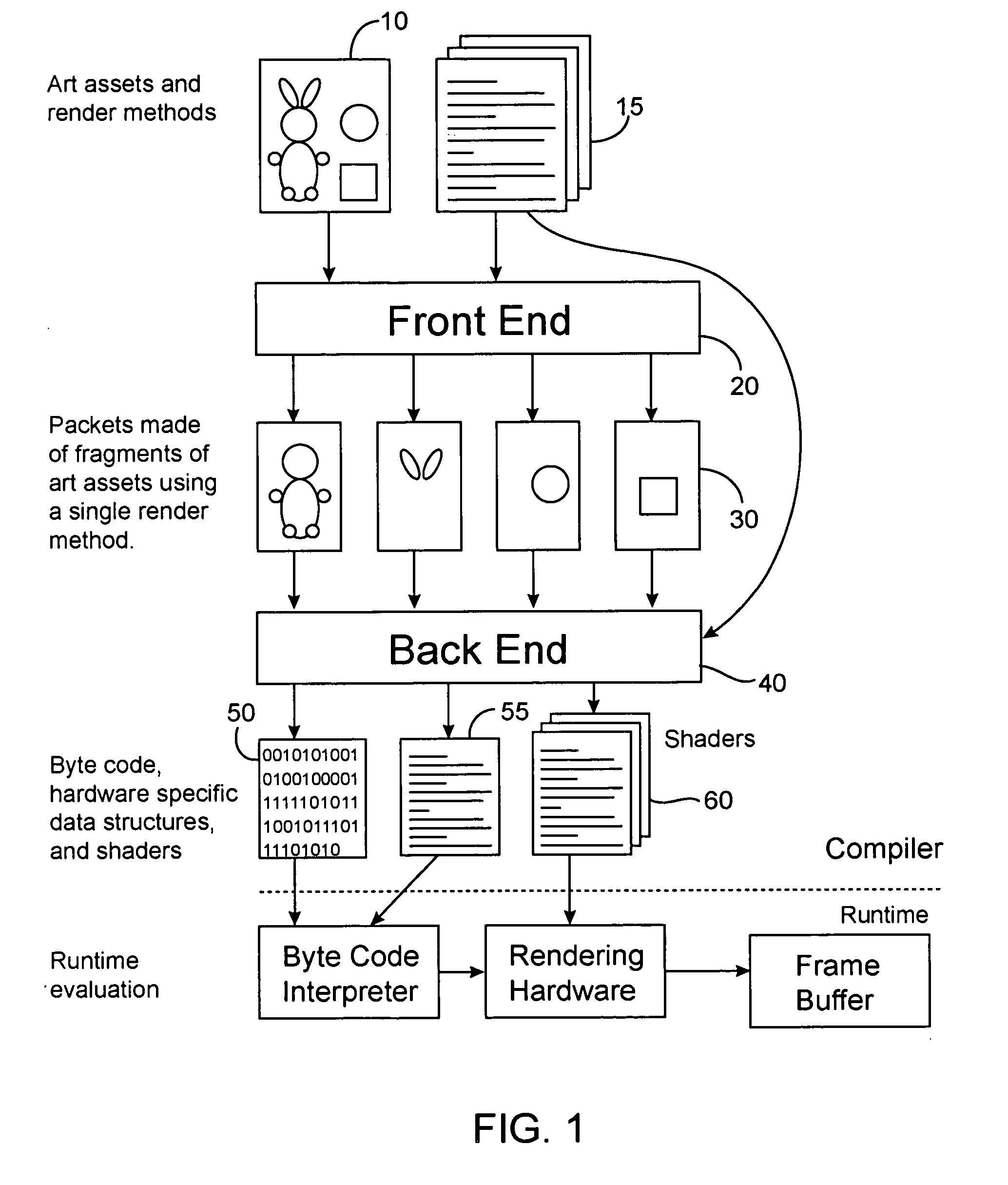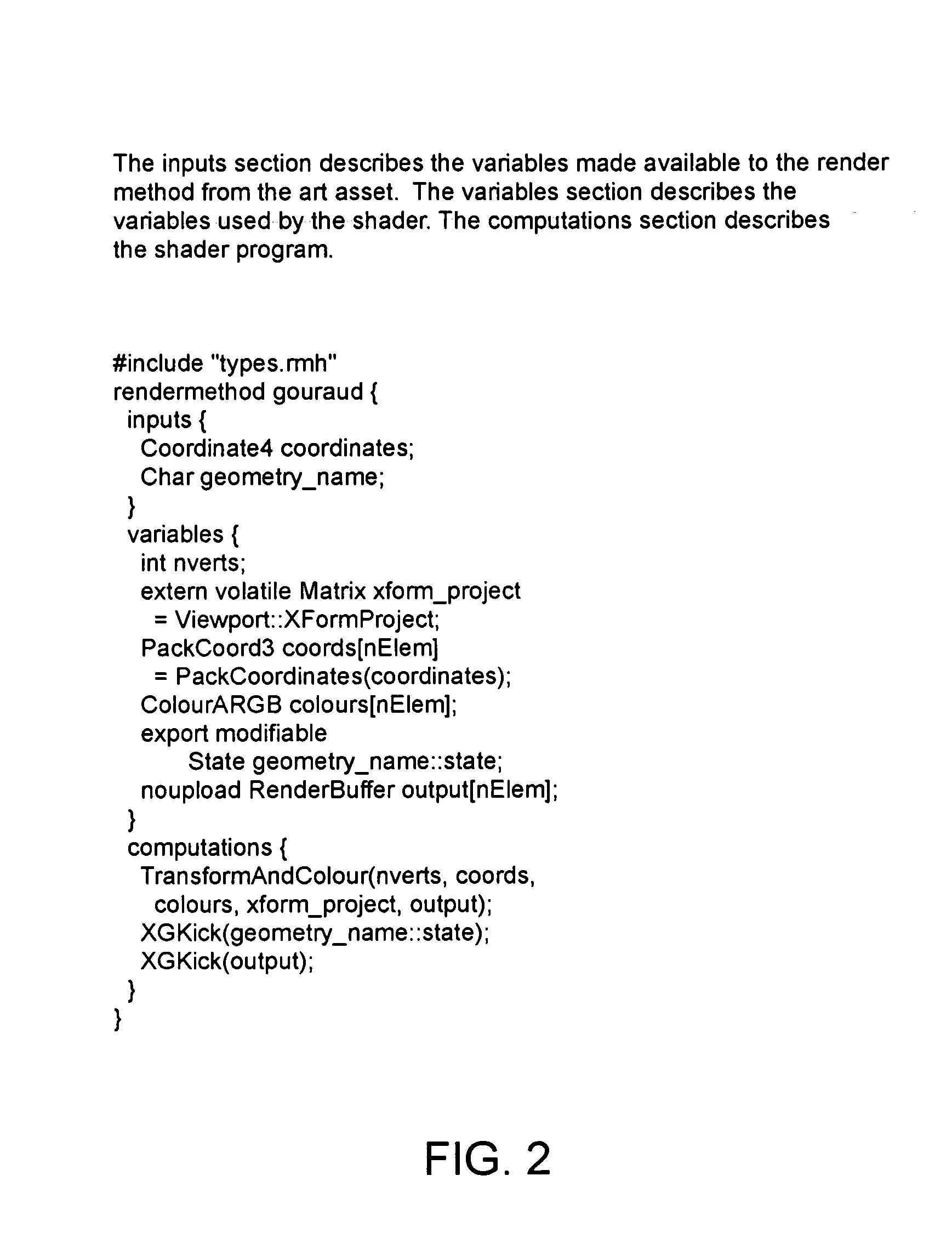Systems and methods for implementing shader-driven compilation of rendering assets
a compilation method and shader technology, applied in the field of rendering systems, can solve the problems of high cost, no one has yet exploited the knowledge of shaders to systematically optimize rendering, and different from today's consumer level hardware, and achieve the effects of fast iteration of art assets, rapid and flexible execution, and dramatic simplified runtime apis
- Summary
- Abstract
- Description
- Claims
- Application Information
AI Technical Summary
Benefits of technology
Problems solved by technology
Method used
Image
Examples
Embodiment Construction
[0040]One embodiment of a system of the present invention is illustrated in FIG. 1. As shown, an art asset 10 and an extension of shader specifications, called the render methods, 15 which include a declaration of shader input variables and off-line computations to generate these variables from the art asset, are provided to the front end 20 of an art asset compiler. The compiler front end 20 takes as input the art asset 10 and render methods 15, e.g., polygonal geometric data and model attributes, and produces segmented, geometrically optimized asset fragments, called packets, 30 representing individual calls to the render methods. It should be appreciated that alternative front ends can be constructed to address non-polygonal data, such as spline surfaces or particle systems using the teachings of the present invention. A back end 40 of the asset compiler takes packets 30 generated by the front end, and generates optimized code and data streams 50, hardware specific data structure...
PUM
 Login to View More
Login to View More Abstract
Description
Claims
Application Information
 Login to View More
Login to View More - R&D
- Intellectual Property
- Life Sciences
- Materials
- Tech Scout
- Unparalleled Data Quality
- Higher Quality Content
- 60% Fewer Hallucinations
Browse by: Latest US Patents, China's latest patents, Technical Efficacy Thesaurus, Application Domain, Technology Topic, Popular Technical Reports.
© 2025 PatSnap. All rights reserved.Legal|Privacy policy|Modern Slavery Act Transparency Statement|Sitemap|About US| Contact US: help@patsnap.com



